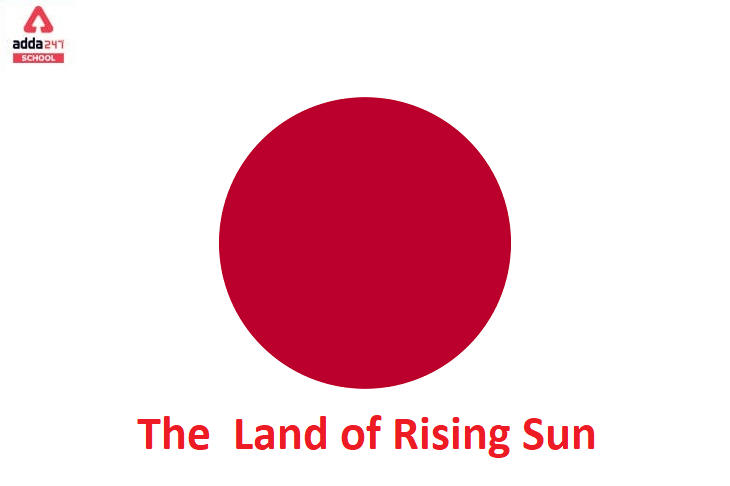Table of Contents
Land of Rising Sun
The western name of Japan is Land of Rising Sun, but why? That is what we are going to talk about.
Japan is an exonym that is used in a variety of languages.
Before the name Dai Nippon Teikoku became popular, Japan was known as Wa or Wakoku during the third-century Three Kingdoms period. Because of the negative connotation, Japanese scribes formally modified the letters used to spell Japan’s native name, Yamato. The name change within Japan is thought to have occurred somewhere between 665 and 703. During the Heian period, a change of letters occurred, which was first pronounced with the Chinese reading Nippon, then as Nifon, and finally, as Nihon in present usage, mirroring phonological variations in Early Modern Japanese. Marco Polo referred to Japan as ‘Cipangu,’ which means ‘sun source land.’ Portuguese traders in Malacca in the 16th century first heard the terms Jepang, Jipang, and Jepun from Malay and Indonesians. It was first reported in English as Giapan in 1577.
Read: 7 Continents
Land of The Rising Sun
Both Nippon and Nihon literally mean “the sun’s origin,” or “the place from which the sun rises,” and are sometimes referred to as the Land of the Rising Sun. This terminology stems from Imperial correspondence with the Chinese Sui Dynasty and alludes to Japan’s situation in relation to China to the east. Japan was known as Wa or Wakoku before Nihon became the official name. Wa was the term given by early China to an ethnic group living in Japan during the Three Kingdoms Period. The Yayoi people lived mostly on Kyushu Island and in the Kanto region of Honshu.
Read: Smallest State of India
The Land of Rising Sun
Japan is an East Asian island nation. It is situated in the Pacific Ocean’s northwest corner. It stretches from the Sea of Okhotsk in the north to the East China Sea and Taiwan in the south and is bounded on the west by the Sea of Japan.
Japan is the world’s eleventh most populous country. It’s also one of the most densely populated and urbanized countries on the planet. The mountainous landscape covers almost three-quarters of the country. There are 47 administrative prefectures and eight traditional regions in Japan. The Greater Tokyo Area is the world’s most populated metropolitan area. Japan is a major player in the international community and a member of various international organizations. Despite having given up the ability to declare war, the country maintains one of the world’s most powerful military, the Self-Defense Forces. After World War II, Japan witnessed unprecedented economic expansion, eventually becoming the world’s second-largest economy by 1990. The country’s economy is the third-largest in nominal GDP and the fourth-largest in terms of purchasing power parity (PPP) as of 2021. Japan, which is ranked “extremely high” on the Human Development Index, has one of the highest life expectancies in the world, despite population decline. Japan has made substantial contributions to science and technology as a global leader in the automobile and electronics industries. Japan’s culture, including its art, cuisine, music, and popular culture, which includes strong comic, animation, and video game industries, is well-known around the world.
Read: Sugar Bowl of The World
Land of Rising Sun in India
Dong is a small village in Dong valley of Anjaw district, Arunachal Pradesh, India. It is the easternmost village in India, near the point where India, China, and Myanmar meet. It is the location of a peak, atop which tourists climb at 3 am to see the sunrise. It isn’t the easternmost point of the country but it is one of the easternmost locations accessible by car. In 1999, it was found that Dong experiences the first sunrise in India, thus earning it the nickname, ‘India’s Land of the Rising Sun.’
The Land of Rising Sun in World
Since the Upper Paleolithic period, Japan has been populated. Political power was held by a series of military dictators and feudal lords beginning in the 12th century, and enforced by a class of warrior nobility. In 1603 the country was reunified following a century of civil conflict. A US fleet compelled Japan to open commerce with the West in 1854. In 1868, imperial power was re-established. During the Meiji period, Japan’s Empire adopted a Western-style constitution and embarked on an industrialization and modernization programme. Japan invaded China in 1937. It entered World War II as an Axis power in 1941. Japan surrendered in 1945 after suffering defeat in the Pacific War and two atomic strikes. It was occupied by the Allies for seven years, during which time it enacted a new constitution. Japan has been a unitary parliamentary constitutional monarchy since the 1947 constitution.
The land of the rising sun Name
Japan was known as Wa or Wakoku before Nihon became the official name. Wa was the term given by early China to an ethnic group living in Japan during the Three Kingdoms Period.
Which country is known as the Land of Rising sun
Japan is known as the “Land of the Rising Sun.” This nickname, Nihon (日本) in Japanese, is derived from the country’s name and reflects the fact that Japan is located to the east of the Asian continent, where the sun rises.



 NTA NEET Exam Date 2025 OUT, Exam Timing...
NTA NEET Exam Date 2025 OUT, Exam Timing...
 CBSE Board Result 2025 Date Soon at resu...
CBSE Board Result 2025 Date Soon at resu...
 NEET MDS Admit Card 2025 (OUT) Today at ...
NEET MDS Admit Card 2025 (OUT) Today at ...










